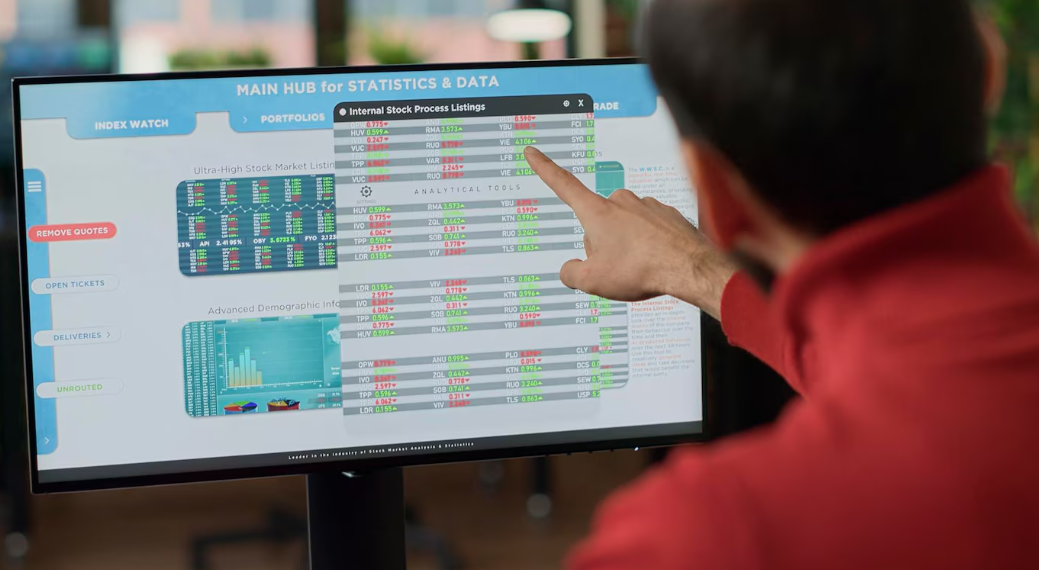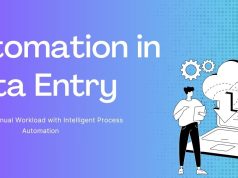It seems like data entry would be simple enough, but data entry is essential for the day-to-day operation of businesses and organizations across the world. From recording sales figures and managing customer information to digitizing old records, data entry is the backbone of countless business processes in the background.
This guide will tell you everything you need to know in case you’re intrigued by what does data entry exactly mean and what are the career prospects, and ultimately, how to begin as a newbie. You’ll discover the various types of data entry, the tools and skills required, and even some tips on how to get started in a data entry career.
What is Data Entry?
Data entry, at its simplest, refers to the process of manually entering, organizing, updating, or maintaining data in a system, often using digital tools such as spreadsheets, databases, or dedicated software. The data could be numeric, textual, or both, and could come from paper documents, online forms, or scanned images.
Why is Data Entry Important?
Through accurate data entry, businesses can rely on the information to make decisions on reporting and keeping the business operational. Whether it be small startups or Fortune 500 companies, error-free data is important for everything from inventory management to customer relationship management (CRM).
Types of Data Entry
Data entry is a broad field with various methods and specialties. Let’s explore the main types to understand its scope better.
1. Manual Data Entry

Manual data entry involves physically typing information from one format (e.g., paper documents, PDFs) into another (e.g., spreadsheets or forms). While time-consuming, this method is crucial for records inaccessible via scanning or automation.
2. Numeric Data Entry
This specialization focuses on handling numerical data, such as financial records, billings, or inventory tracking. Common industries requiring numeric data entry include accounting, logistics, and healthcare.
3. Data Cleaning and Verification
This type focuses on ensuring the accuracy of existing data by identifying mistakes, duplicates, or outdated information. It often comes before analysis or reporting phases.
4. Online Data Entry
Here, workers input data directly into online systems or cloud-based platforms, such as databases or CRM tools. It’s common in industries where information needs constant updates, like e-commerce and customer support.
5. Transcription
Transcription includes listening to audio files and converting spoken words into written text. It requires excellent listening skills and a high degree of accuracy. Example fields include medical transcription and legal documentation.
6. Image Data Entry
Image data entry involves extracting information from scanned images or handwritten documents using specialized software like OCR (Optical Character Recognition).
Required Skills for Data Entry Roles

While data entry may not demand extensive technical qualifications, certain foundational skills are necessary for success.
1. Typing Speed and Accuracy
Quick, error-free typing is a must. On average, professionals aim for 50-60 words per minute (WPM) with high accuracy.
2. Attention to Detail
Even small mistakes can have significant consequences in data management. Being detail-oriented ensures accurate records and reliable data.
3. Basic Computer Knowledge
Familiarity with software like Microsoft Excel, Google Sheets, and online systems is essential. Knowing shortcuts and advanced features can boost efficiency.
4. Organizational Skills
Many data entry tasks involve managing large volumes of information. A systematic approach to categorizing and storing data ensures work is completed efficiently.
5. Communication Skills
Clear communication is often overlooked but critical for tasks like transcribing audio data or clarifying unclear instructions with a team.
6. Ethical Responsibility
Handling sensitive company or customer data requires discretion and confidentiality. Understanding privacy protocols and adhering to them is non-negotiable.
Common Tools for Data Entry
Here are some essential tools that simplify and streamline data entry tasks.
1. Software Tools
- Microsoft Excel and Google Sheets for spreadsheets and data organization.
- Databases like Microsoft Access or MySQL to manage structured information.
- OCR Tools (e.g. Adobe Acrobat, Abby FineReader) to convert images or PDFs into editable text formats.
- CRM Software like Salesforce or HubSpot for managing customer data.
- Specialized Tools, such as transcription software (e.g., Otter.ai or Express Scribe).
2. Hardware Requirements
- A reliable computer or laptop with decent processing speed.
- High-quality keyboard and mouse for ergonomic and efficient typing.
- Scanners for digitizing physical documents when necessary.
Career Opportunities in Data Entry
Who Hires Data Entry Professionals?
Data entry jobs can be found across industries like healthcare, retail, finance, logistics, and more. Positions might be in-house, though remote opportunities have increased significantly thanks to cloud technology.
Common Job Titles
- Data Entry Clerk
- Administrative Assistant
- Transcriptionist
- Data Analyst (with added technical expertise)
- Office Coordinator
Compensation and Growth
Entry-level jobs may not pay a lot, but skilled and specialized professionals such as legal or medical transcriptionists can earn well without incurring formal education costs. And skills such as speed, accuracy and expertise with advanced data tools can lead to high-level statistics, such as database management jobs.
6 Tips for Getting Started in Data Entry
If you’re a beginner, these tips will help you kick off your career in data entry.
1. Hone Your Typing Skills
Use free tools like Typing.com or Kerby to improve speed and accuracy.
2. Build Software Proficiency
Familiarize yourself with tools like Excel, Google Sheets, and transcription software. Certifications in these can make your resume stand out.
3. Start Small with Freelance Work
Platforms like Upwork and Fiverr are excellent starting points for beginners looking for flexibility and experience.
4. Avoid Job Scams
Unfortunately, data entry is a field where scams are common. Stay wary of job postings requiring upfront fees or vague descriptions.
5. Develop Niche Skills
Specializing in fields like medical transcription or proficiency in tools like SQL can significantly boost your earning potential.
6. Build a Strong Portfolio
Create a portfolio showcasing examples of your work. A spreadsheet with mock entries or proof of a completed certification can act as a compelling addition.
A Look Ahead at the Future of Data Entry

The tech evolution is changing the data entry sector. Automation, machine learning and AI tools are performing more basic entry tasks. Still, human experience is still important for complicated pieces of information cleaning, data development, and data interpretation. This means that you will remain competitive in this field for a long time, as long as you know how to collaborate with technology.










